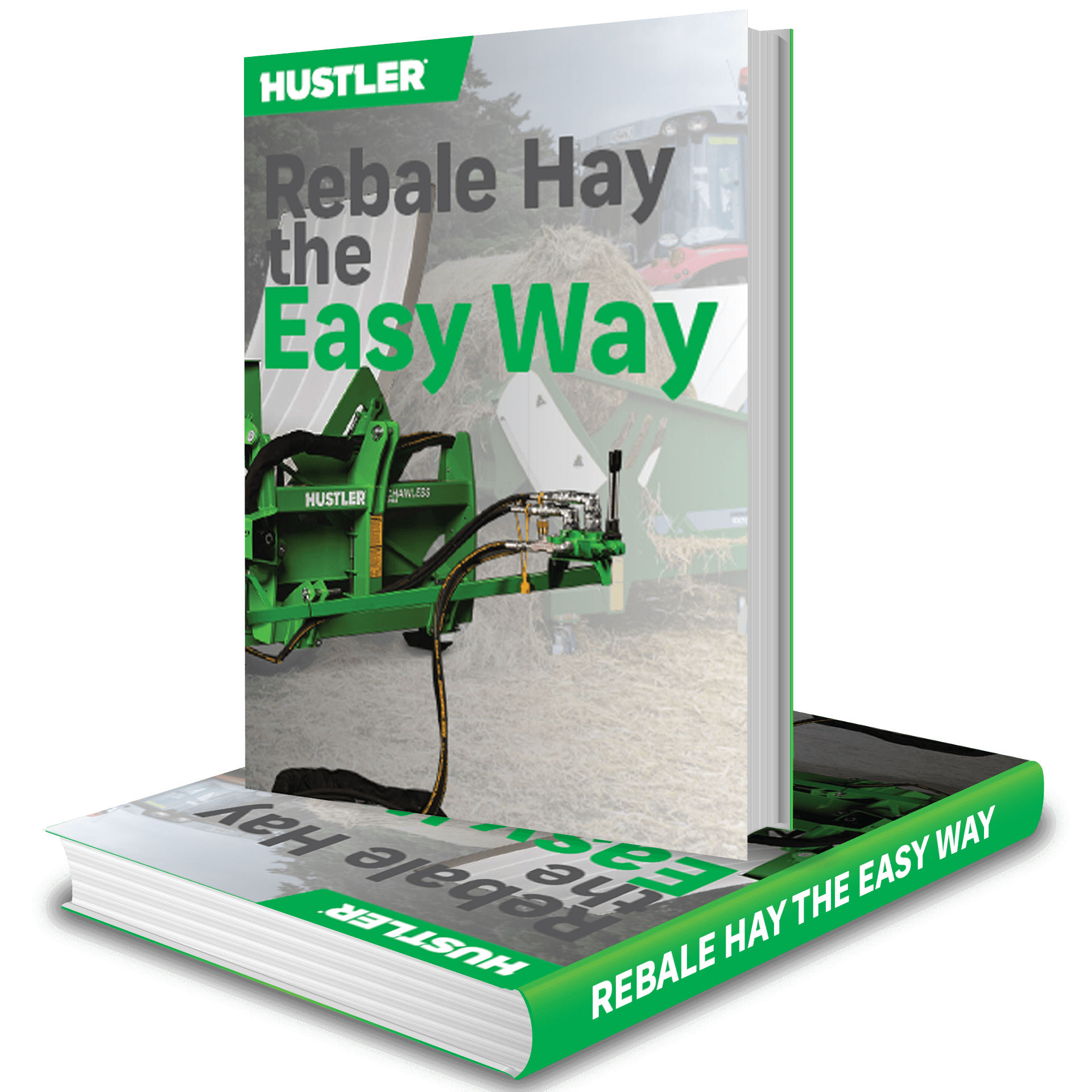Holly Creek Farms explains how to rebale hay with a Hustler Chainless bale processor
Rebaling hay has become a popular practice among farmers looking to optimize their hay production. Reed Graham from Holly Creek Farms YouTube channel has published a recent video to explain their process, as they received a lot of questions regarding this practice.
In the video below, Reed delves into the process of re-baling hay using a Hustler Chainless bale processor and a New Holland 565 baler, highlighting the numerous benefits it brings to the farming operation.
If you’re not familiar with rebaling, you can read this introductory article before watching Holly Creek Farm’s video.
The Setup
Setting up the equipment for rebaling takes between 10 and 15 minutes, according to Reed. He explains that he does it every single time he rebales hay because he likes putting away the equipment in the barn instead of leaving it outside overnight. The Hustler Chainless hay unroller/bale feeder, equipped with an EzRemote hydraulic kit, offers seamless integration with the baling tractor that Reed uses to feed both the bale feeder (hydraulic) and baler (PTO). With a quick start-up, the tractor’s PTO engages to start the baler, while the hydraulic system feeds the Hustler bale processor, efficiently breaking down large round bales.
Breaking Down Round Bales
Then, the Hustler Chainless bale processor works its magic. The processor’s rotors expertly separate the hay from the round bales, preparing it for the rebaling process. Reed likes to make short pauses, as continuous feeding can sometimes cause the baler to jam if too much hay is fed at once. The hay is gradually fed into the baler, ensuring a steady and controlled flow. Reed can also remove any unwanted materials from the hay during the process.
Teamwork Makes the Dream Work
While Reed is happy to rebale hay all by himself with this setup, he sometimes gets an extra set of hands that can significantly boost productivity. While managing the rebaling duties, it is beneficial to have someone control the tractor’s throttle to maintain an optimal pace. This allows for efficient bale transition and facilitates cutting the net wrap or string between bales. By reducing idle time, fuel consumption is minimized, resulting in cost savings.
Optimized Output
Quantity and quality rebaling hay with a Hustler bale feeder proves to be a highly productive method. On average, Reed can produce approximately 100 bales per hour, consistently getting 15 to 16 small square bales from a single large round bale. Reed explains that rebaling hay provides him with greater versatility in feed management and marketing options for reselling. Smaller square bales are more manageable and convenient to handle for small and hobby farms compared to their larger counterparts. Reed explains he likes to call up his customers who can directly pick up and load the small square bales, eliminating the need for further handling for himself.
By harnessing the power of efficient equipment, farmers can enhance their productivity, streamline operations, and optimize their output. The ability to convert large round bales into smaller square bales provides flexibility and convenience in handling, transport, and marketing.
Incorporating a Hustler bale feeder into your farming routine not only saves time and labor but also contributes to maximizing the overall profitability of your operation.
Contact us for more information and grab your free digital copy of our rebaling guide!



























